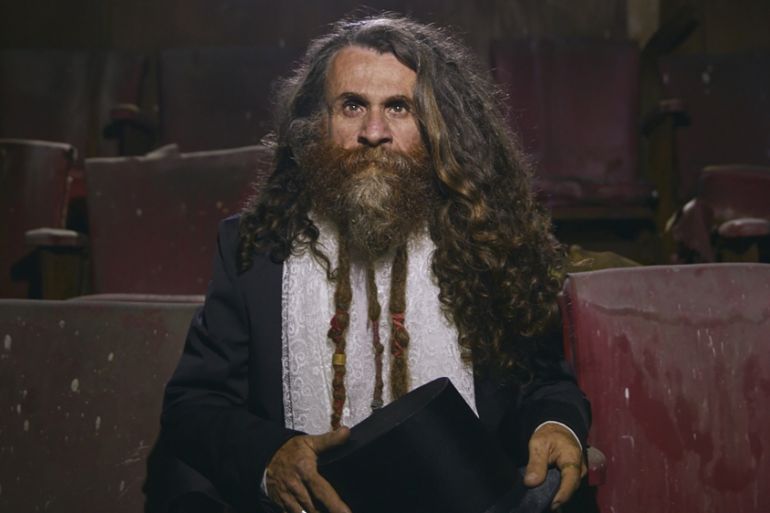
Brazil’s Cinema Morocco: From the Streets to the Movie Screen
A community of refugees and homeless people occupying an abandoned cinema take to the screen and reenact film classics.
Editor’s note: This film is no longer available to view online.
In 1954, Sao Paulo’s Cinema Morocco was one of the most glamorous picture houses in Latin America.
Keep reading
list of 4 itemsFire engulfs iconic stock exchange building in Denmark’s Copenhagen
Inside the pressures facing Quebec’s billion-dollar maple syrup industry
‘Accepted in both [worlds]’: Indonesia’s Chinese Muslims prepare for Eid
It housed Brazil‘s first international film festival that saw a parade of Hollywood stars in attendance, screening black-and-white classics such as Sunset Boulevard, La Grande Illusion, and Julius Caesar.
Decades later, the ornate cinema has closed, the building is abandoned.
A community of refugees, immigrants, and homeless people now reside there, living under the constant threat of eviction by the municipality.
At one time, more than 2,000 people from 17 countries occupied the building, making a home for themselves among the ticket booths, graffitied walls and emptied rooms.
Their rent is collected by the building’s informal supervisor, Vladimir, who says he uses the money for maintenance as well as legal support to fight repossession cases.
While residents give the building a second life, a film crew visits to revive the films once shown there.
In a guerilla-style acting workshop, residents work with the crew to learn scripts, don costumes, rehearse film scenes, and reenact them on camera.
Many of them use the workshop to reflect on their pasts as well as their future dreams.
Valter, a former lighting technician who struggled with depression and ended up on the streets after his brother was assassinated, wants to start a theatre group; Dulce, a mother from Cape Verde, is determined to return home to her children and earn a living as a singer; and Cameroonian rapper Kouotou speaks truth through his music.
In total, 30 community members participate in the workshop, working hard to perfect their performances. But soon, the realities of eviction come knocking at their door.
____________________________________________________________________________________
FILMMAKER’S VIEW
By Ricardo Calil
Why should one make a film about immigrants, refugees and homeless people reinventing scenes from classic movies in the same place where they were screened 60 years before?
Because this concept allowed us to bring together universes that seemed distant to each other: past and present, documentary and fiction, glamour and decadence, fight for shelter and artistic invention.
Because one single project allowed the director – who is also a film critic – to approach several subjects that are close to his heart: the love of movies, social inequality, urban decay and the end of street cinemas, and prejudice against the homeless, immigrants and refugees.
Because cinema should be for everyone, and masterpieces shown for the Brazilian elite in the past should also be accessible to people who are suffering from social vulnerability in the present.
Because the process offered the residents a chance to occupy the building, not only physically, but also symbolically – consuming culture in a temple created for this end.
Because they could reinvent their realities through the filter of cinema. And because the same happened with the crew of the film – who, coming from a different economic universe, were also transformed by the experience.
Because everyone deserves a chance to shine. And so they did, incarnating characters that once belonged to Marlon Brando, Gregory Peck, Audrey Hepburn, Gina Lollobrigida, Vittorio de Sica, Gloria Swanson, Harriett Anderson and others.
Because there’s a trend in Brazil – and, we believe, in the whole world – of criminalising social protest and repelling the homeless, immigrants and refugees. A film that shows their power, creativity and talent can offer a modest contribution to oppose this sad vision.